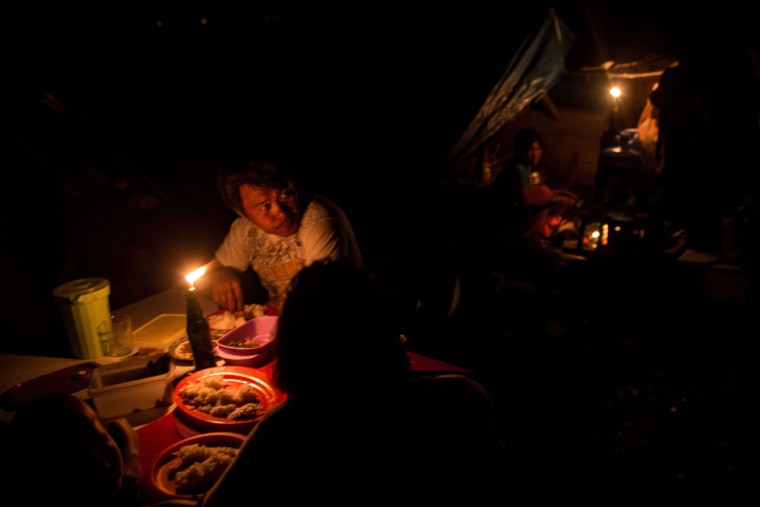
TACLOBAN CITY, Philippines — More than a month since Typhoon Haiyan tore through the Philippines, most of the worst-hit island of Leyte is still mired in darkness when night falls. But the lights are slowly starting to come back on — thanks to the distribution of solar lamps by the United Nations Refugee Agency.
With as many as 12 million people impacted by the storm and nearly 4 million displaced, those left behind have been trying to rebuild new homes on the ruins of their old ones.
But a major issue in the makeshift cities has been light. In the wake of major natural disasters, theft, rape, human trafficking and domestic violence can often thrive in the darkness of ramshackle refugee camps.
“With no electricity, people commit these acts with a higher level of impunity,” said Arjun Jain, head of the United Nations High Commissioner for Refugees in the southern Philippines.
While reports of this type of violence have so far been isolated, the fear is widespread.

Mary Ann Ignacio, 41, of Barangay Doña Breda, a coastal village in eastern Leyte, said that as soon as darkness falls, she barricades herself and her family into the shelter they now call home. She’s worried about thieves taking what little they have left, or worse, that her daughters could get raped.
Ignacio catches a few hours of sleep in the daytime, because at night she’s awake, protecting her family with prayers, a watchful eye, and if anyone should enter their make-do home, a machete.
To bring light where there’s no electricity, UNHCR is distributing solar lanterns in the makeshift villages that have sprung up in the disaster zone.
Designed to look like old-fashioned camping lamps, the solar panels get charged after sitting in the sun for eight hours. The charge, which provides illumination for six to eight hours, can also charge mobile phones, according to the UNHCR.
Logistical challenges have made it frustratingly hard to deliver the lanterns. Between supply chain hurdles and the sheer scale of the destruction of basic infrastructure, the delivery of lamps was delayed for more than three weeks.
UNHCR just started to distribute their first 9,000 solar lamps in Leyte province last week.
That’s far less than the 50,000 they hope to eventually hand out. But Jain says that the lamps have “really changed the landscape of several communities.”
Barangay 89, a neighborhood of Tacloban that was flattened by the storm surge and is now full of white refugee tents, is one of the places where UNHCR has distributed the solar lanterns.
For the first time since the storm, there are now signs of life after sundown. People are staying up, eating dinner later, and women and children feel safer walking around at night.

“The idea behind these solar lanterns is to bring some normalcy to these communities so people can feel safer, the children can play, the parents can find ways to continue their work after dark," Jain told Reuters. "You see families getting together at night, which they could not do otherwise."
Jain says that having light has also allowed people to work longer hours and begin to earn a living. The very first night, lobster fishermen stayed up building box traps and boaters were out catching fish before dawn.
The mobile chargers on the lanterns, aside from giving people the chance stay in touch with their families, has also let fishermen contact their buyers and stay up-to-date on prices.
Typhoon Haiyan slammed into the Philippine islands on Nov. 8 with over 190 mph winds that flattened places like Tacloban City on Leyte — once home to 220,000 people.
The devastating typhoon killed 6,009 people, according to data released by the Philippine government on Dec. 13. As many as 1,779 people remain missing. The typhoon is the deadliest natural disaster on record to hit the Philippines.
Nearly 95 percent of the deaths from the powerful storm came on Leyte and Eastern Samar.
As the disaster moves from emergency to recovery, getting back to work will be crucial in moving people off of dependence on relief goods for their daily necessities.
However, Jain points out that in the face of the millions of people displaced, getting some lights on is “just a drop in the bucket.”
The Philippine government says it will try to have electricity restored by Christmas Eve.
It’s a goal Philippine Energy Secretary Carlos Jericho Petilla promises to reach, but warns that it is “a very tight deadline,” considering the extent of the damage.
Reuters contributed to this report.
Related: